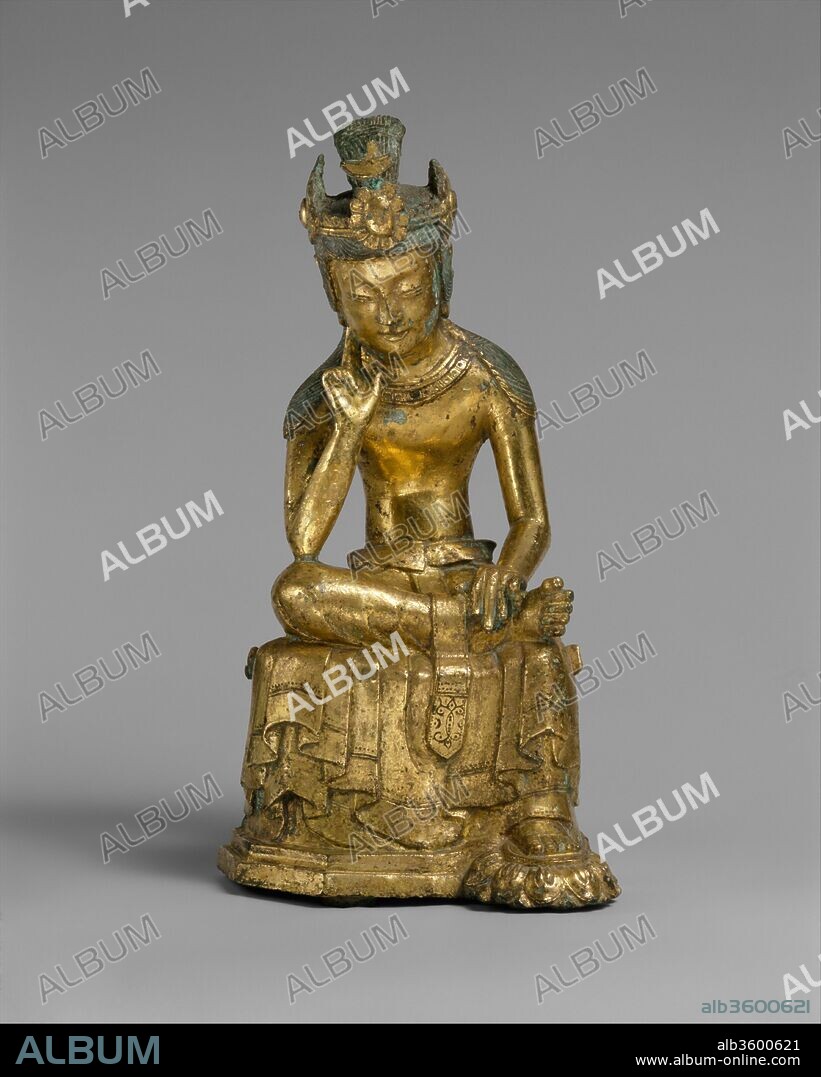alb3600621
Pensive bodhisattva

|
Zu einem anderen Lightbox hinzufügen |
|
Zu einem anderen Lightbox hinzufügen |



Haben Sie bereits ein Konto? Anmelden
Sie haben kein Konto? Registrieren
Dieses Bild kaufen.
Nutzung auswählen:

Titel:
Pensive bodhisattva
Untertitel:
Automatische Übersetzung: Nachdenklicher Bodhisattva. Kultur: Korea. Abmessungen: H.8 7/8 in. (22,5 cm); B. 4 Zoll (10,2 cm); D. 4 1/4 Zoll (10,8 cm). Datum: Mitte des 7. Jahrhunderts. Bilder des nachdenklichen Bodhisattva verbreiteten sich zwischen dem fünften und achten Jahrhundert in Ostasien. In Korea entwickelte sich der Typus im sechsten und siebten Jahrhundert zu einer wichtigen buddhistischen Ikone, insbesondere in den Königreichen Baekje und Silla. Diese sitzende Figur gehört zu den am besten erhaltenen Exemplaren. Es ist von einer subtilen, aber spürbaren Energie durchdrungen, die sich in Details wie den biegsamen und lebensechten Fingern und Zehen artikuliert. Seine Krone ist mit einem Kugel-und-Halbmond-Motiv gekrönt, was auf zentralasiatischen Einfluss hinweist.
Pensive bodhisattva. Culture: Korea. Dimensions: H. 8 7/8 in. (22.5 cm); W. 4 in. (10.2 cm); D. 4 1/4 in. (10.8 cm). Date: mid-7th century.
Images of the pensive bodhisattva became prevalent in East Asia between the fifth and eighth centuries. In Korea, the type emerged as an important Buddhist icon during the sixth and seventh centuries, particularly in the kingdoms of Baekje and Silla. This seated figure is among the best-preserved examples. It is infused with a subtle yet palpable energy that is articulated in such details as the pliant and lifelike fingers and toes. His crown is topped with an orb-and-crescent motif, indicating Central Asian influence.
Technik/Material:
gilt bronze
Zeitraum:
Three Kingdoms period (57 B. C. -A. D. 676)
Museum:
Metropolitan Museum of Art, New York, USA
Bildnachweis:
Album / Metropolitan Museum of Art, NY
Freigaben (Releases):
Bildgröße:
3282 x 4094 px | 38.4 MB
Druckgröße:
27.8 x 34.7 cm | 10.9 x 13.6 in (300 dpi)
Schlüsselwörter:
 Pinterest
Pinterest Twitter
Twitter Facebook
Facebook Link kopieren
Link kopieren Email
Email
